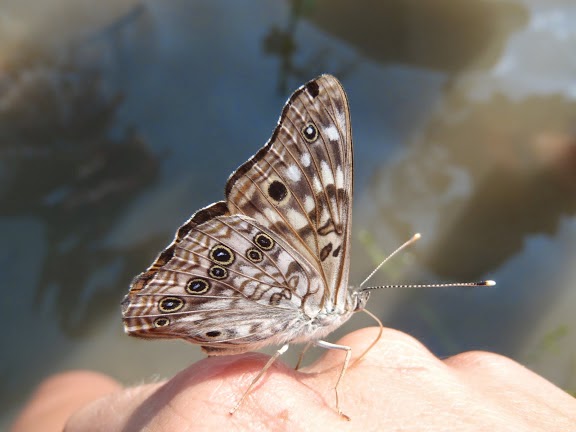 |
| Hackberry emperor- Chris Barnhart |
A special trait of this emperor is their attraction to humans. They will frequently circle us while walking along the road or in the woods, looking for the perfect place to land. If you watch carefully you can see them unfurl their rolled up proboscis and gently slurp up any sweat and salt off your skin. This is harmless enough unless it lands on an insect-adverse individual in which case they occasionally get swatted.
 |
| Hackberry emperor larva - Chris Barnhart |
 |
| Hackberry emperor - dpughphoto.com/ |
Since they are cold-blooded like all insects, they can't control their internal temperature. They can use shelter, sun exposure and other tactics. By aligning their bodies perpendicular to the sun, they can catch more warming rays like we might by getting out into the sun on a cold day.
When cold, they slow down and hide. We use this trait to move, transport and even photograph captured butterflies in a chilled state. They survive for several days in the refrigerator, awaiting the relative safety of the enclosed butterfly house. By transporting them in a cooler, we prevent them from dehydrating or damaging their wings by flapping to escape. When released they need to warm up their flight muscles and like some other species they "shiver" before flying off. You can watch this just before they flutter out of their ziplock bags, into the safety of the Butterfly House.
* University of Milwaukee Field Station